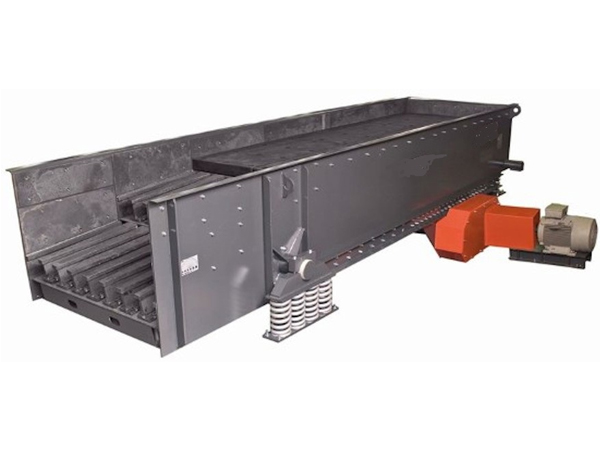How to adjust the vibration force of vibrating feeder
Adjusting the vibration force of a vibrating feeder is crucial to ensure it operates efficiently and effectively. The vibration force can be modified by adjusting the eccentric weights or the amplitude and frequency of the vibrating motors.
The steps to adjust the vibration force of a vibrating feeder

1. Understand the Equipment
Refer to Manual: Before making any adjustments, consult the manufacturer’s manual for specific instructions and safety guidelines related to your vibrating feeder model.
Identify Components: Familiarize yourself with the key components, such as the vibrating motors, eccentric weights, and control settings.
2. Safety Precautions
Power Off: Ensure the feeder is turned off and disconnected from the power supply before making any adjustments.
Safety Gear: Wear appropriate personal protective equipment (PPE), such as gloves and safety glasses.
3. Adjusting Eccentric Weights
Locate the Eccentric Weights: The eccentric weights are usually mounted on the vibrating motors. Each motor typically has two weights: one fixed and one adjustable.
Adjust the Angle of Weights:
Loosen the bolts securing the adjustable weights.
Rotate the adjustable weights to the desired angle to increase or decrease the vibration force.
Align the weights on both motors to ensure balanced vibration.
Tighten the bolts securely after making adjustments.
Weight Configuration:
Increasing the angle between the fixed and adjustable weights will increase the vibration amplitude.
Decreasing the angle will reduce the amplitude.
4. Adjusting Motor Speed
Variable Frequency Drive (VFD):
If your vibrating feeder is equipped with a variable frequency drive, you can adjust the motor speed to change the vibration force.
Increase the frequency to increase the vibration force and decrease the frequency to reduce it.
Control Panel:
Adjust the settings on the control panel according to the manufacturer’s guidelines.

5. Test and Observe
Power On: After making adjustments, reconnect the power supply and turn on the feeder.
Observe Performance: Monitor the feeder’s performance to ensure the desired vibration force is achieved.
Adjust Further if Needed: If the vibration force is still not adequate, repeat the adjustment process until the desired force is reached.
6. Regular Maintenance
Routine Checks: Regularly inspect the eccentric weights, motor speed settings, and overall condition of the feeder to maintain optimal performance.
Lubrication: Ensure that all moving parts are properly lubricated according to the manufacturer’s recommendations.
Summary
Adjusting the vibration force of a vibrating feeder involves modifying the eccentric weights and/or the motor speed. Follow the manufacturer’s guidelines and safety precautions when making adjustments. Regular monitoring and maintenance are essential to ensure the feeder operates efficiently. If you encounter persistent issues, consult the manufacturer or a professional technician for further assistance.


